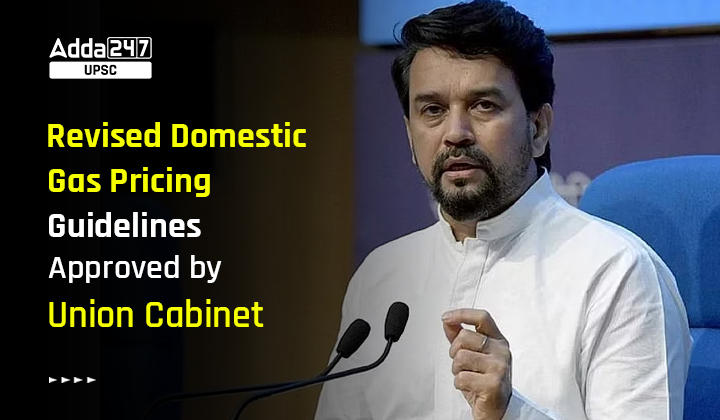Table of Contents
Revised Domestic Gas Pricing Guidelines: The revised Domestic Gas Pricing Guidelines are the updated guidelines for determining the prices of domestic gas in India. Revised Domestic Gas Pricing Guidelines are important for UPSC Prelims 2023 and UPSC Mains Exam (GS Paper 2- Various government policies to promote sustainable energy infrastructure in India).
Revised Domestic Gas Pricing Guidelines in News
Recently, Revised guidelines for pricing of domestically produced natural gas from specific nomination fields have been approved by the Cabinet Committee on Economic Affairs, chaired by Prime Minister Shri Narendra Modi.
Revised Domestic Gas Pricing Guidelines
The approved revised domestic natural gas pricing guidelines are applicable to the nomination fields of ONGC/OIL, NELP blocks, and pre-NELP blocks, where the prices are subject to the Government’s approval as per the Production Sharing Contract (PSC).
- A monthly notification of the pricing for the specified natural gas will be set at 10% of the Indian Crude Basket’s monthly average.
- For ONGC & OIL’s nomination block-produced gas, the Administered Price Mechanism (APM) price will have a minimum and maximum limit.
- Newly drilled or intervened wells in their nomination fields will be permitted a 20% premium over the APM price for their produced gas.
Domestic Gas Pricing Guidelines, 2014
At present, the pricing of domestic gas is determined according to the Domestic Gas Pricing Guidelines of 2014, which received Government approval in the same year.
- These guidelines dictate the declaration of domestic gas prices for a period of six months, based on the volume-weighted prices prevailing at four gas trading hubs, namely Henry Hub, Albena, National Balancing Point (UK), and Russia.
- The prices are based on the preceding 12 months with a time lag of one quarter.
Need for Revised Domestic Gas Pricing Guidelines
The revision and reform of the earlier gas pricing guidelines was deemed necessary due to their high volatility and significant time lag based on four gas hubs.
- The new guidelines address this by linking prices to crude, which is now a standard practice in most industry contracts and more relevant to our consumption basket, with deeper liquidity in global trading markets on a real-time basis.
- Under the revised guidelines, the previous month’s Indian Crude basket price data will determine the APM gas price.
Revised Domestic Gas Pricing Guidelines Significance
The revised guidelines aim to establish a consistent pricing system for domestic gas consumers while also offering incentives to producers to boost production and safeguard against market volatility.
- To increase the share of natural gas in India’s primary energy mix from the current 6.5% to 15% by 2030, the government has set a target.
- These reforms are intended to encourage the use of natural gas, resulting in a reduction in emissions and progress toward the goal of achieving net zero.
- The revisions are expected to cause a substantial reduction in prices for Piped Natural Gas (PNG) in households and Compressed Natural Gas (CNG) used for transportation.
- These price reductions will also reduce the burden of the fertilizer subsidy and provide assistance to the domestic power sector.
- The growth of a gas-based economy promoted by the revised pricing guidelines will also result in a lower carbon footprint.
Gas Price Review Panel Submitted its Report: Key Recommendations?
Gas Price Review Panel Submitted its Report: Key Recommendations?



 TSPSC Group 1 Question Paper 2024, Downl...
TSPSC Group 1 Question Paper 2024, Downl...
 TSPSC Group 1 Answer key 2024 Out, Downl...
TSPSC Group 1 Answer key 2024 Out, Downl...
 UPSC Prelims 2024 Question Paper, Downlo...
UPSC Prelims 2024 Question Paper, Downlo...
